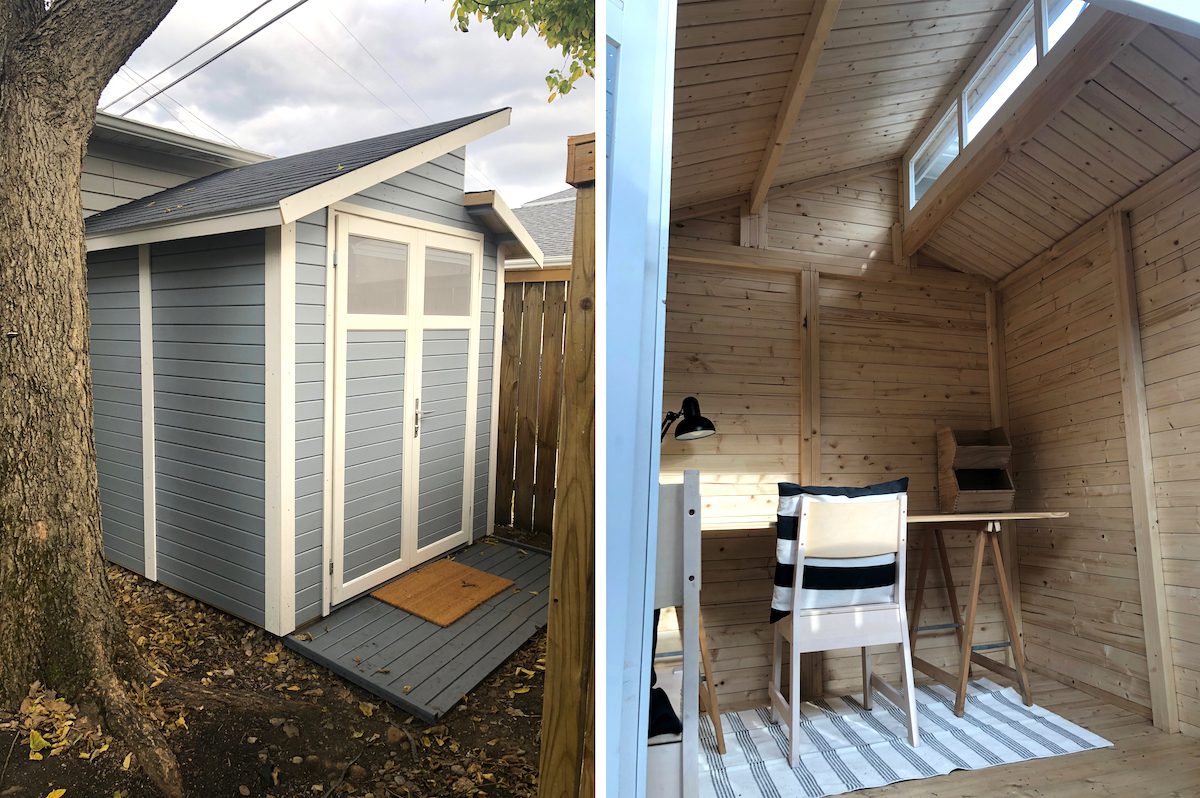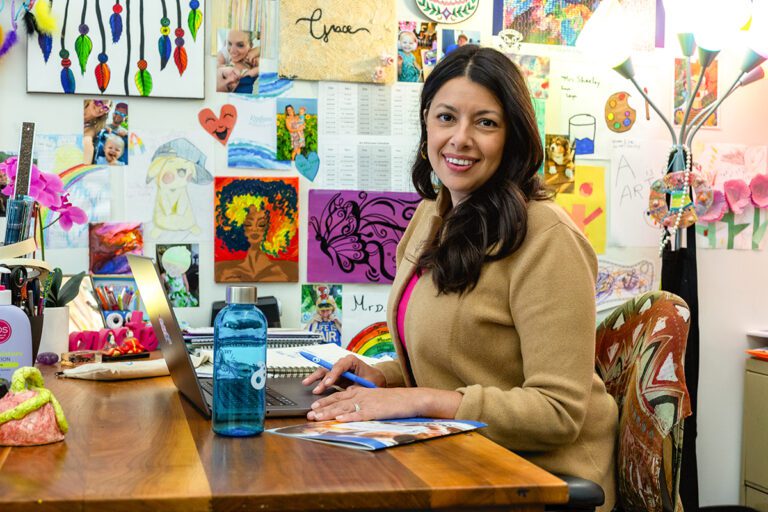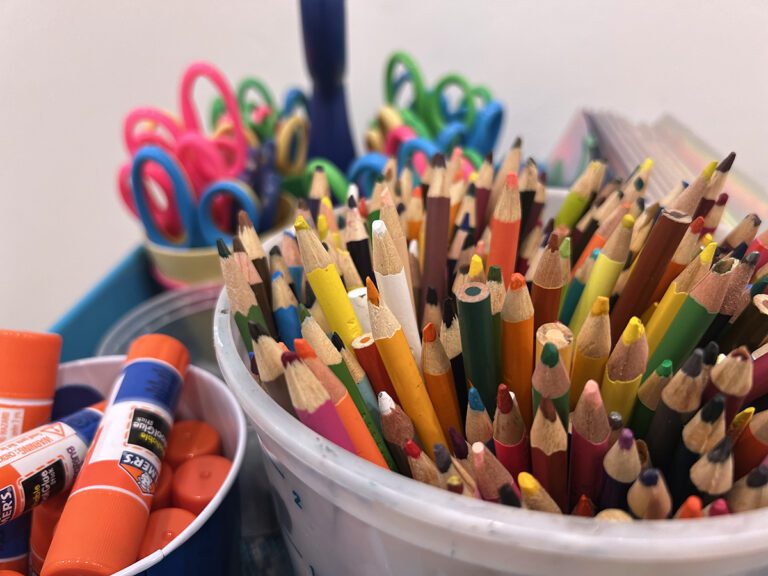In the Spring of 2020, like most art teachers, I found myself teaching, making art, and living all within the same space. As art educators, we teach, we learn, and we create. We need a space that engages us in all of these activities.
During that time, I ended up with a desk from our garage, sized for a fourth-grader, in the corner of our family room…facing the wall. One evening, while sitting on a couch within eye-shot of the tiny desk, I came upon pictures of Laura Lohmann’s “Creativity Cottage” on Instagram. This art educator from Ohio transformed a backyard shed into a space that encouraged her own creativity and artmaking. I swooned over her creative sanctuary and talked to everyone about my desire to build a shed.
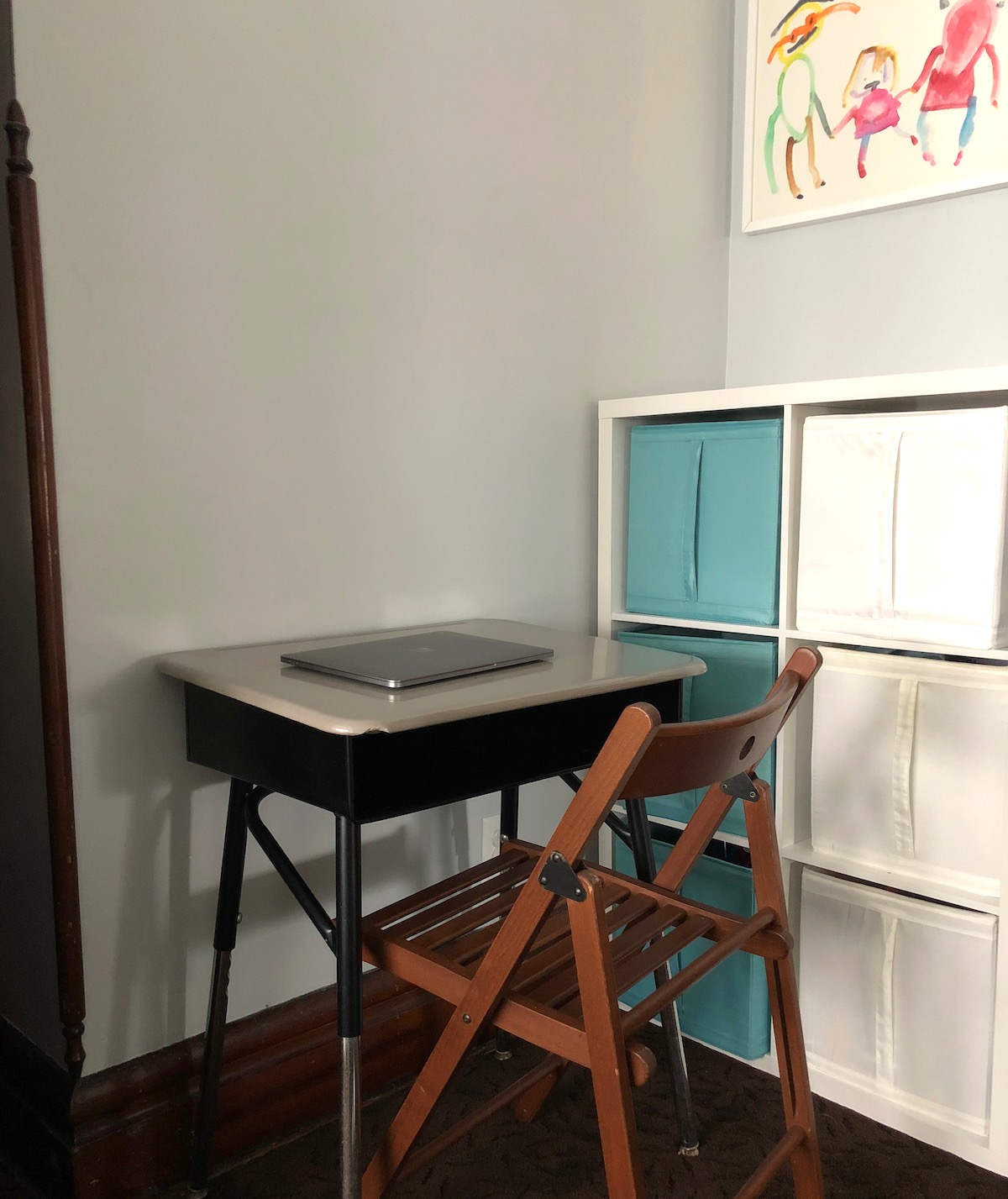
As art teachers, it is essential to carve out a space for ourselves that serves multiple purposes. In my quest to form a space of my own, I learned from several art educators what considerations they noted in making creative space for themselves at home.
Can you transform an existing space?
You probably can’t have cups of paint water or a computer set up at your dining room table forever. Take a look at the under-utilized spaces of your house and reimagine them. Interestingly, many art teachers have found a place for creativity near the washer and dryer. Laura Hensley of Minnesota notes that when she tells others about her studio space, they think it sounds glamorous when truly it is a basement space with no windows on the way to the dryer. But, she painted the walls white and added lots of lighting to make the space bright.
Carving Out Your Creative Space (Ep. 050)
Several years ago, Matt Young of Ohio renovated a basement space near the family laundry room into a home office, but now the room is his art teacher hub. Oregon art educator, Lauren Suveges, laid claim to an awkward space between her kitchen and her laundry room for her creative pursuits. Take a walk around your own home and consider where a transformation could take place to foster creativity.
Make your space inviting.
After falling in love with Laura Lohmann’s shed, I reached out to her to ask how she made her space so inviting. She shared that making an inviting space does not have to be costly. Repurposing furniture from around the house or finds on a local Facebook Marketplace page may yield inexpensive treasures. Laura wants her outdoor space to connect to the natural world outside its doors. She brings in sticks, bird nests, and plants to create a sense of calm.
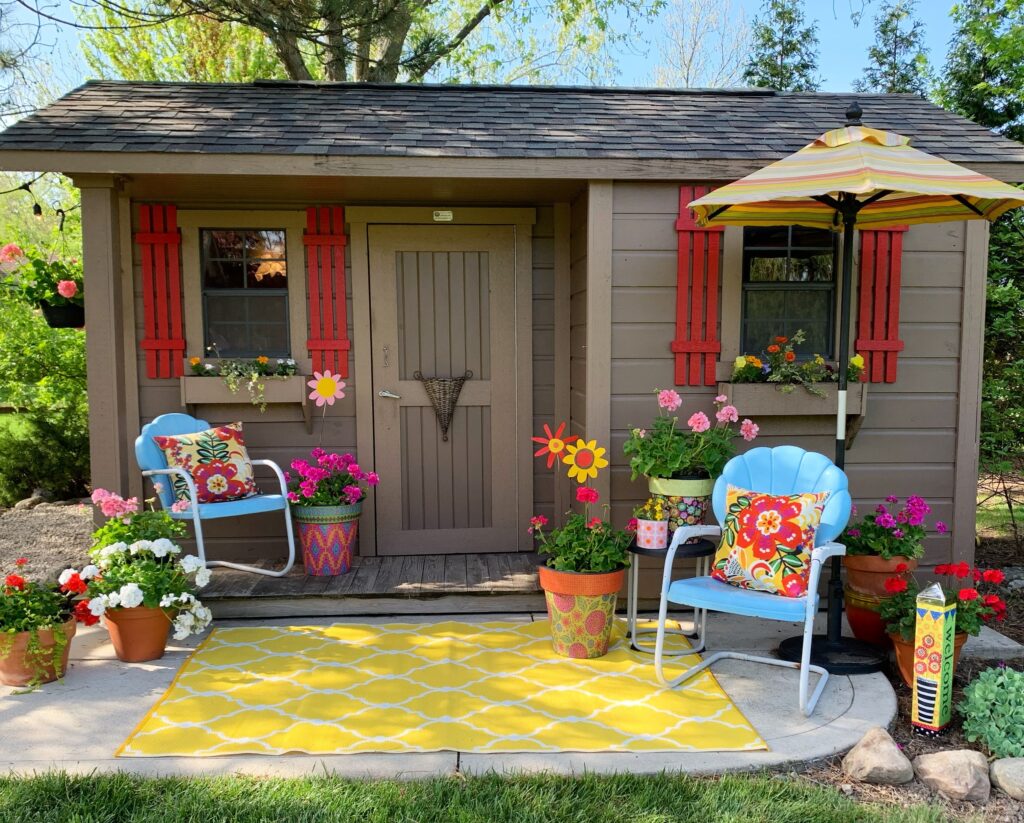
Art teacher Kristin Barbour of Pennsylvania set out during distance learning to make her art space cute and kid-focused. Kristin realized pretty quickly that she needed to be more comfortable in the physical space as she was the one spending time there. Out went the adorable “Art with Mrs. Barbour” sign, and in came a new chair that she special ordered. Her ultimate goal was to make her time in front of the computer more comfortable. She was reminded that she needs to be authentic and true to herself. Kristin focused on how she will use her creative space rather than mimicking what she saw online. If you will spend any amount of time in your own creative space, consider the purpose and your unique aesthetic.
Declutter, even when it is difficult.
Art teachers collect things; we see potential in everyday objects. It is inspiring to have stuff all around us. But, all the stuff can also be overwhelming or even prevent us from using the space. Lauren Suveges uses easy-to-store materials. Her guest room walls have become a space to hang her works in progress. To see the artworks hung on the wall gives her a unique perspective for her next creative steps. And, the vertical “storage” keeps the art from becoming damaged.
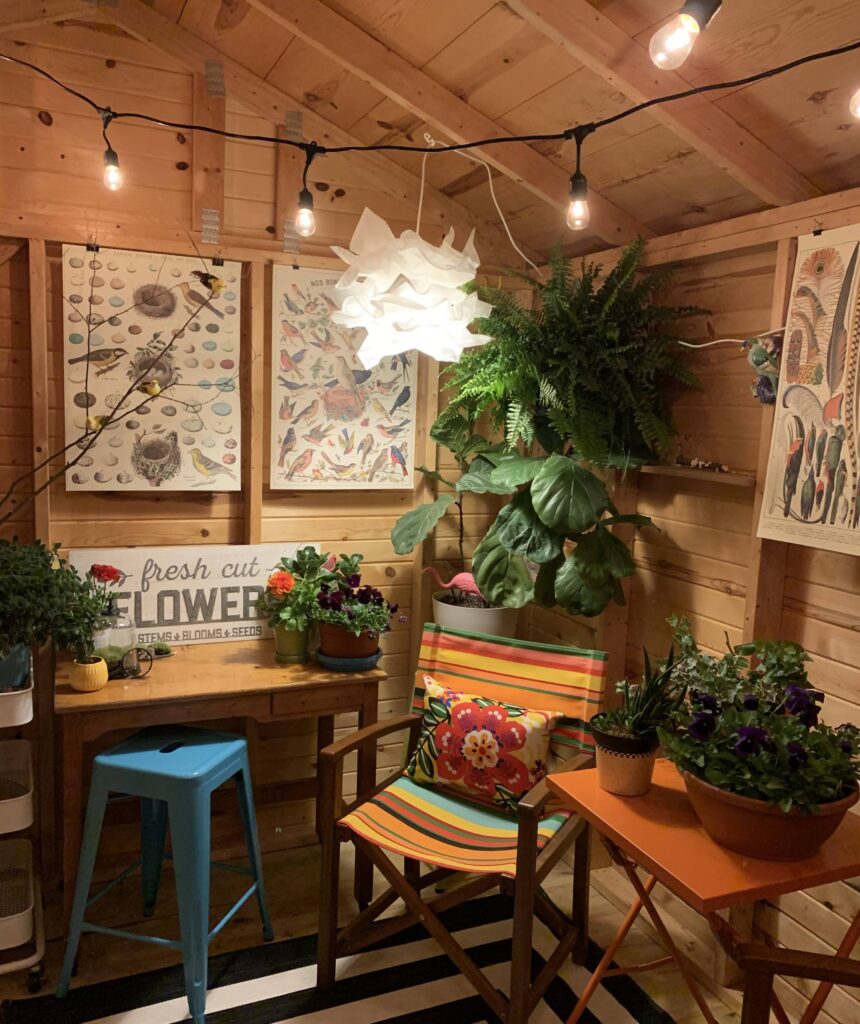
Laura Lohmann uses a supply caddy to roll the supplies she needs from the house to her shed. She has a canning jar of water on hand for cleaning brushes when needed. A wall of shelves helps Laura Hensley keep everything in its place, yet accessible when she needs a material or tool. Organizing and decluttering her own artmaking space has led to a new personal venture to help others repurpose spaces in their homes.
How to Make Your Own Art and Teaching Tools at the Same Time
Kristin Barbour had art supplies all over the house, and honestly, who can’t relate? With distance learning came the need to gather these supplies in one place for easy access. However, gathering these materials into one location did encourage other family members to make art. They found themselves sitting down to be creative together, a practice they hope will continue.
Communicate the meaning of your space.
Kristin Barbour laments how her office space typically becomes the catch-all after the holidays. The pandemic has forced her to refocus the purpose of this space. She strives to remind herself and her family to put things away, where they belong.
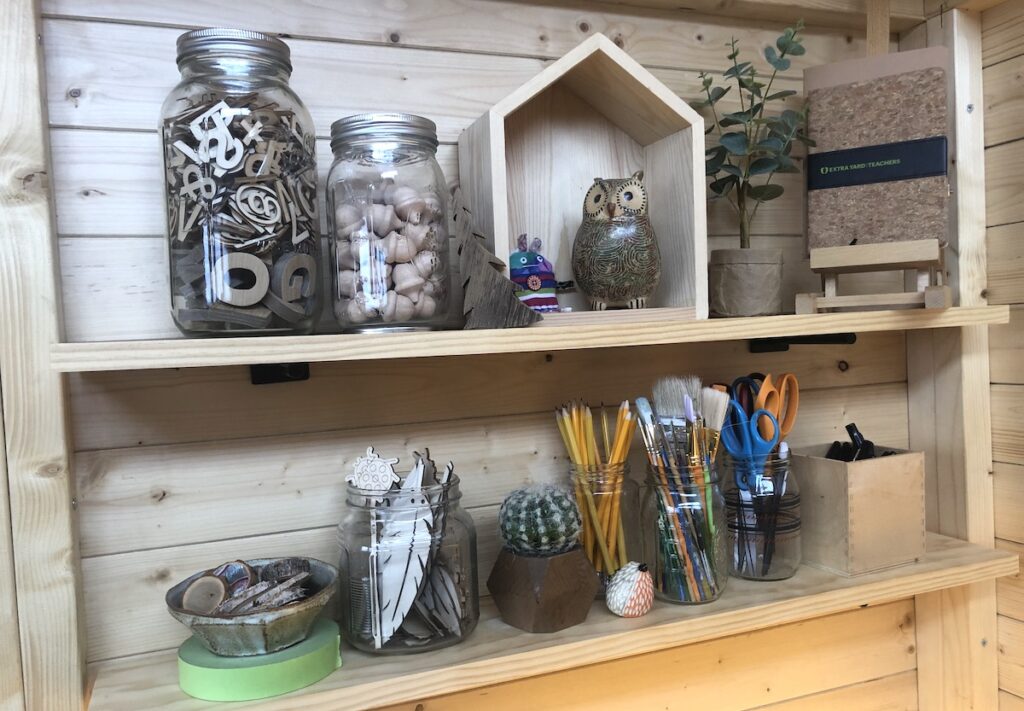
Matt Young speaks of the need to inform family members when the space is in use. If he’s filming a video or conducting a class session, it is not the best time to bring a basket of laundry to the washer. He shares that displaying a physical sign on the door helps as a visual reminder. Yet, it’s not only about keeping the space to yourself. Inviting family members to spend time with you in your creative space can make the experience feel special and memorable.
How I made space.
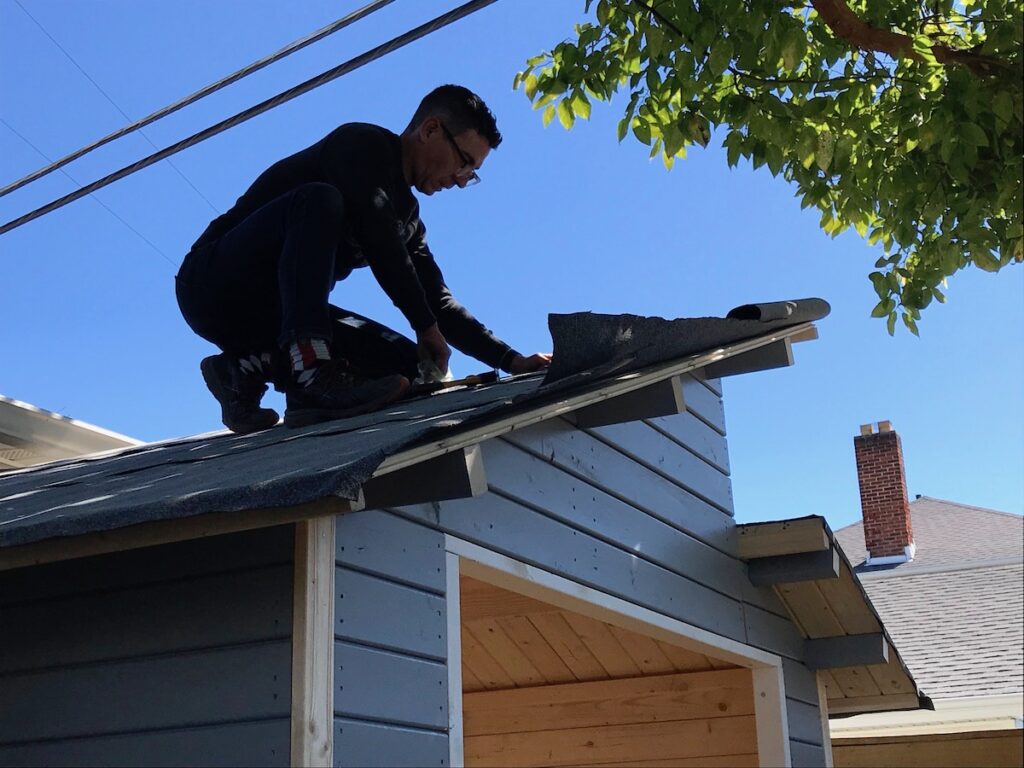
After months of sitting at the tiny desk, it became clear that I needed a more dedicated space to call my own. Realizing there were no additional spaces in our home, I investigated potential sheds for hours. This fall, we assembled what our family refers to as “The Studio” and sometimes as “The Tiny Shed.” The space is not huge, but skylights and light paneled wood make the room bright. The studio is situated in the corner of our backyard, where nothing has ever seemed to grow. This was an under-utilized space, to say the least, that now has a new purpose.
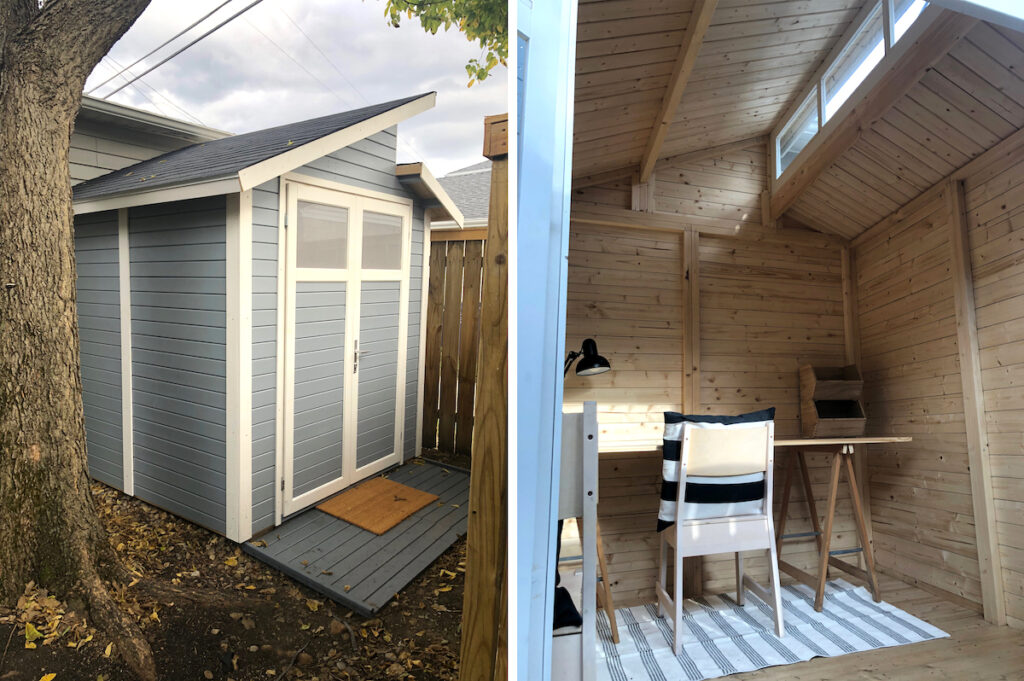
I have been hesitant to fill the space with too many supplies and instead carry plastic tubs of materials out when I need them. Like Kristin Barbour, there are certain supplies I am relocating from random places in the house. There is no reason for me to store a small paper cutter under the living room couch anymore. I have a beautiful creative space to put the cutter to use. There have been opportunities for my kids to spend time creating with me in the small space. The invitation to create does make our time together feel even more special.
Make the Most of Your Summer by Making Your Own Art
The shed has electricity… cue the hot glue gun. And a Wi-Fi extender makes video calls possible, which always prompts a simple studio tour from all interested parties. I know this space will transform over time as my needs change. But, having a space to create and work feels special and inspiring.
What locations in your home could be repurposed for a personal workspace?
How can the space you already have be reorganized to support teaching and creating?
Where do you store your supplies? Are they easy to access for artmaking?
Magazine articles and podcasts are opinions of professional education contributors and do not necessarily represent the position of the Art of Education University (AOEU) or its academic offerings. Contributors use terms in the way they are most often talked about in the scope of their educational experiences.
